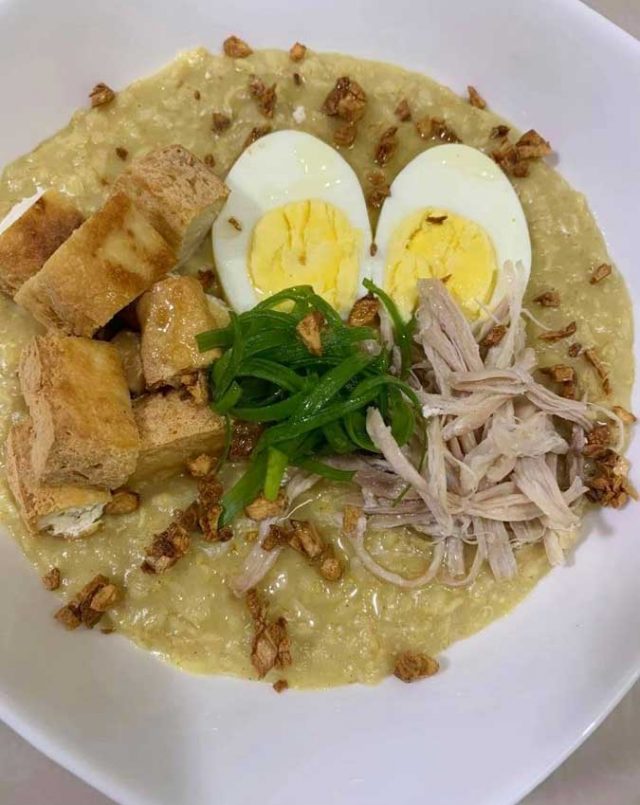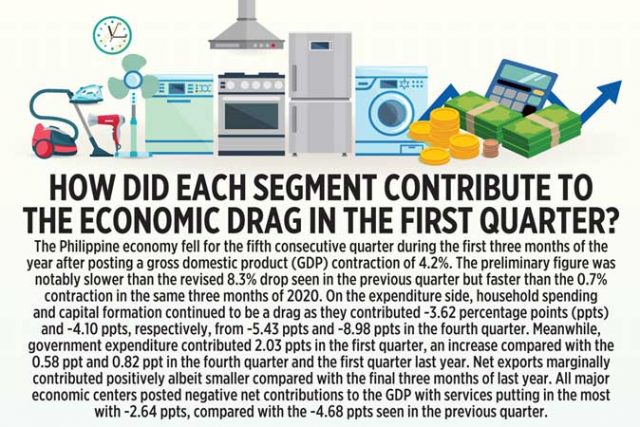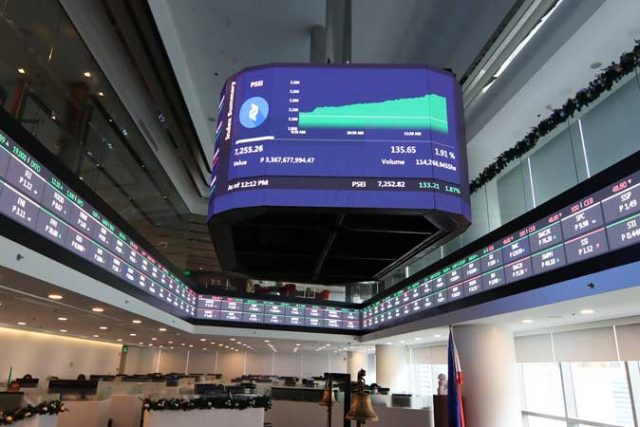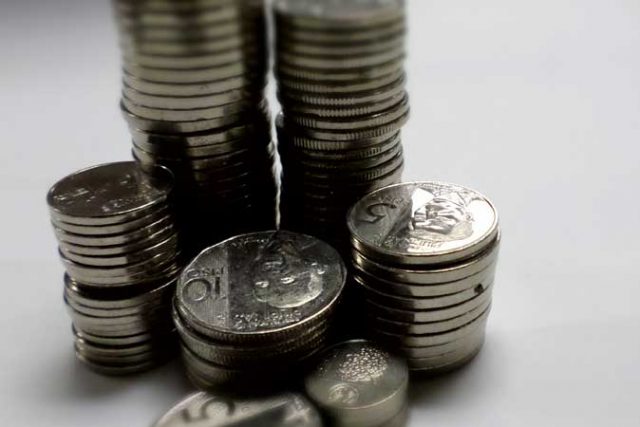LAST week we presented three iterations of lugaw — the quintessential Filipino rice porridge — created as a result of the De La Salle-College of Saint Benilde (DLS-CSB) Culinary Cluster’s Lugaw Challenge which saw 10 culinary experts from the School of Hotel, Restaurant, and Institution Management give their own twist on this favorite Filipino comfort food.
This week we present three more of the recipes the chefs developed.
CURRY OATMEAL LUGAW
Recipe by: chef Zemir Rollan, De La Salle-College of Saint Benilde Part-Time Faculty for Principles of Menu Planning and Food
“My lugaw is a healthier version, for I opted for whole grain rolled oats instead of glutinous rice. These are high in fiber and can help reduce cholesterol.
“My inspiration for my dish is my husband, because he eats oatmeal with honey and milk every morning. To change it up, I decided to bring a new spin to his familiar breakfast.”
Ingredients:
480 grams whole rolled oats
250 grams chicken breast
10 grams curry powder
5 grams salt
5 grams leeks
2 eggs, hard boiled
2 grams garlic, fried
50 grams tofu, fried Pepper to taste
Procedure:
1. Boil the chicken in 750 ml water. Reserve the chicken stock to cook the oatmeal.
2. When the chicken is cooked, shred it into pieces.
3. Cook the whole rolled oats in the chicken broth. Add water if necessary.
4. Simmer for 10-15 minutes.
5. Season the porridge with curry mix, salt and pepper.
6. Once cooked, place it in a bowl and garnish with fried tofu, leeks, shredded chicken, hard boiled egg and fried garlic.
WILD MUSHROOM AND ADLAI LUGAW SERVED WITH SOUS VIDE EGGS, CRISPY PANCETTA, TOASTED WALNUTS, AND ROSEMARY OIL
Recipe by: chef Jade Christopher Lee, De La Salle-College of Saint Benilde Professor on Principles of Menu Planning and Food Production, Professional Cooking, Garde Manger and Charcuterie, Poultry and Meat Cookery, International Cuisine, and Food Safety and Sanitation
“The inspiration for my lugaw recipe are my travels to Italy and my love of Italian cuisine. I live by the words Il cibo é l’essenza della vita, meaning, food is the essence of life.
“The core of Italian cooking is its simplicity. We must use the freshest ingredients possible and use cooking techniques that enhance and highlight the natural flavor of food. Food is a way of life, meant to be enjoyed and savored!”
Ingredients:
6 eggs
100 ml olive oil
10 grams fresh rosemary leaves
200 grams white onion, large dice
100 grams carrots, large dice
100 grams celery, large dice
1 grams whole black peppercorns
1 grams fresh rosemary
½ gram bay leaf
5 grams garlic, peeled
2 liter water
30 grams dried wild mushrooms
30 ml rosemary oil
30 grams butter
100 grams white onion, chopped
400 grams adlai
1.5-2 liters vegetable stock, warm
Salt
Pepper
50 grams pancetta, thinly sliced
60 grams walnuts, chopped
Procedures:
1. Sous vide eggs at 145F or 63C for 1 hour and 30 minutes.
2. Combine olive oil and rosemary in a saucepan. Cook over low heat for 5-10 minutes. Oil should be warm and not hot.
3. Turn off the heat and leave the rosemary to infuse for at least an hour.
4. Using a blender, blend the infused oil and strain. Set the rosemary oil aside.
5. Place onions, carrot, celery, peppercorns, rosemary, bay leaf, garlic and water in a pot and simmer for 30-45 minutes. Strain and reserve the liquid.
6. Soak dried mushrooms in warm vegetable stock for 20-30 minutes. Strain and reserve the mushrooms and the soaking liquid.
7. Dice the mushrooms.
8. Heat rosemary oil and butter in a pan, sauté onions until translucent.
9. Add chopped mushrooms and sauté until slightly toasted.
10. Add adlai and stir until grains are coated in fat.
11. Add vegetable stock and the mushroom soaking liquid. Simmer until adlai grains are cooked about 30-45 minutes. Season with salt and pepper.
12. Cook pancetta slices until crispy either in a pan over the stove or in the oven. Set aside.
13. Toast chopped walnuts until fragrant and golden brown.
14. To plate: ladle a portion of lugaw in a bowl, crack a sous vide egg in the middle, sprinkle with toasted walnuts and crispy pancetta, and lastly, drizzle with a little rosemary oil.
Serves 5-6 people
MISO AND SHIITAKE LUGAW WITH MISO-GLAZED CHICKEN, SPICY PICKLED WOOD EAR MUSHROOMS AND RAMEN EGG, GARNISHED WITH NORI FLAKES AND SESAME CHILI OIL
Recipe by: chef Erica Aquino, De La Salle-College of Saint Benilde Part-Time International Cuisine Lecturer
“When we were picking our themes, the other chefs were mostly doing western versions of lugaw. I knew I wanted to do something Asian. When I looked around my kitchen, I noticed we had a lot of Japanese ingredients that I could use. This recipe was inspired by my obsession with ramen eggs and miso soup during last year’s quarantine.”
Miso Shiitake Lugaw:
2 pcs. Dried Shiitake Mushrooms
1 cup Hot Water
2 tbsp. Vegetable Oil
2 tbsp. Chopped Onion
1 tsp. Minced Garlic
1 tbsp. Grated Ginger
3 tbsp. Red Miso Paste
½ cup Japanese Rice
2 cups Low-Sodium Chicken Stock
Salt and Pepper to taste
Miso-Glazed Chicken:
250 grams Skinless Chicken Breast
Salt and Pepper
Miso Marinade:
1 tbsp. Red Miso Paste
1 tsp. Hot Water
1 tbsp. Light Soy Sauce
3 tbsp. Brown Sugar
1 tbsp. Mirin
1 tsp. Grated Ginger
1 tsp. Sesame Oil
Spicy Pickled Wood Ear Mushrooms:
5 grams Dried Wood Ear Mushrooms
1 cup Hot Water
¼ tsp. Salt
2 tbsp. Apple Cider Vinegar
¼ tsp. Salt
½ tsp. White Sugar
¼ tsp. Black Pepper
¼ tsp. Togarashi Spice Powder
1 tsp. Sesame Oil
½ tsp. Toasted White Sesame Seeds
Ramen Egg:
2 Large Eggs
Water for boiling
Ice water
Other toppings:
Sliced Spring Onions, optional
Seasoned Seaweed Flakes, as needed
Sesame Chili Oil, as needed
Miso-glazed chicken:
1. Season the chicken breast with salt and pepper.
2. In a bowl, combine marinade ingredients and set aside 2 tablespoons of marinade for glazing. Pour remaining marinade over chicken. Let marinate for at least 30 minutes before grilling.
3. Grill chicken on a preheated grill pan over medium high heat. Brush chicken on both sides with reserved marinade while grilling. Cook for 5-8 minutes or until cooked through.
4. Allow chicken to rest for 5 minutes before cutting into 1/2 -inch cubes.
Spicy pickled wood ear mushrooms:
1. Add ¼ tsp salt to hot water. Rehydrate dried mushrooms in salted water for 20 minutes.
2. Drain liquid from mushrooms and pat dry with a towel.
3. Cut the mushrooms into thin strips.
4. In a bowl, mix vinegar, salt, sugar, pepper, togarashi, sesame oil and sesame seeds.
5. Toss mushroom in vinegar mixture and let marinate for at least 30 minutes or until ready to use.
Ramen egg:
1. Boil water in a pot over medium high heat.
2. Lower heat to medium and gently place eggs in the water.
3. Boil the eggs for exactly 6 minutes and 30 seconds.
4. Remove eggs from boiling water and immediately place in ice water to stop cooking.
5. Keep in ice water until ready to use.
Miso shiitake lugaw:
1. Rehydrate dried shiitake mushrooms by soaking in hot water for 20 minutes.
2. Remove mushrooms from water and reserve mushroom stock. Slice mushrooms and set aside.
3. In a pot, heat vegetable oil over medium heat. Sauté onions, garlic, and ginger until fragrant and tender.
4. Add mushrooms and sauté for 2 minutes.
5. Add miso paste, chicken stock and reserved mushroom stock. Bring stock to a boil.
6. Add rice grains and lower heat to a simmer. Constantly stir the lugaw for 30-40 minutes until the rice is cooked and the mixture thickens.
7. You may add more water or stock to achieve desired consistency. Season with salt and pepper to taste.
To assemble: In a bowl, ladle lugaw and top with diced chicken, pickled mushrooms, peeled and halved ramen egg, nori flakes and sliced spring onion. Drizzle chili oil on top and sprinkle togarashi for extra spice.
For more lugaw recipes, go to Lugaw Challenge brings a new spin to the essential Filipino dish — BusinessWorld (bworldonline.com)



















